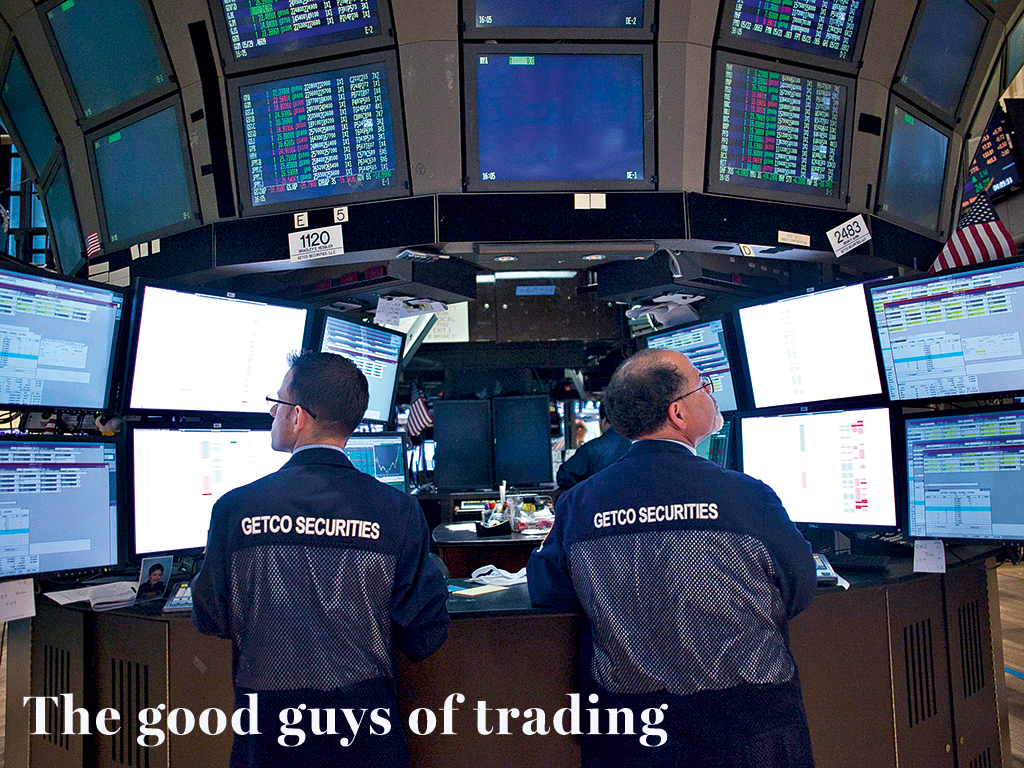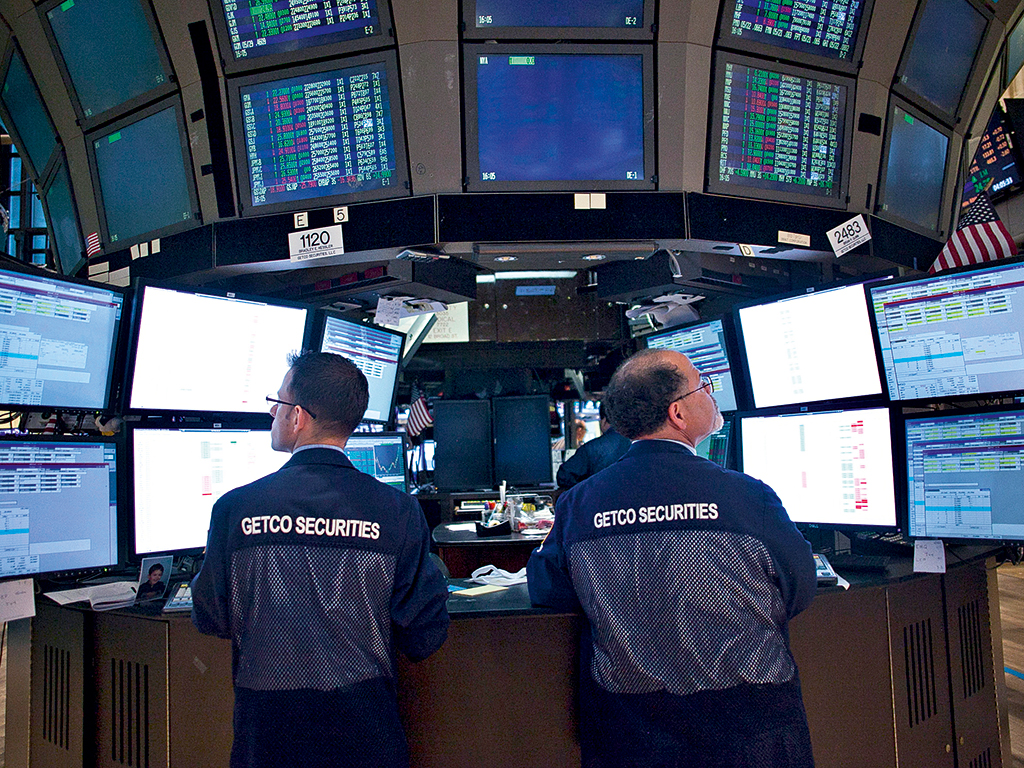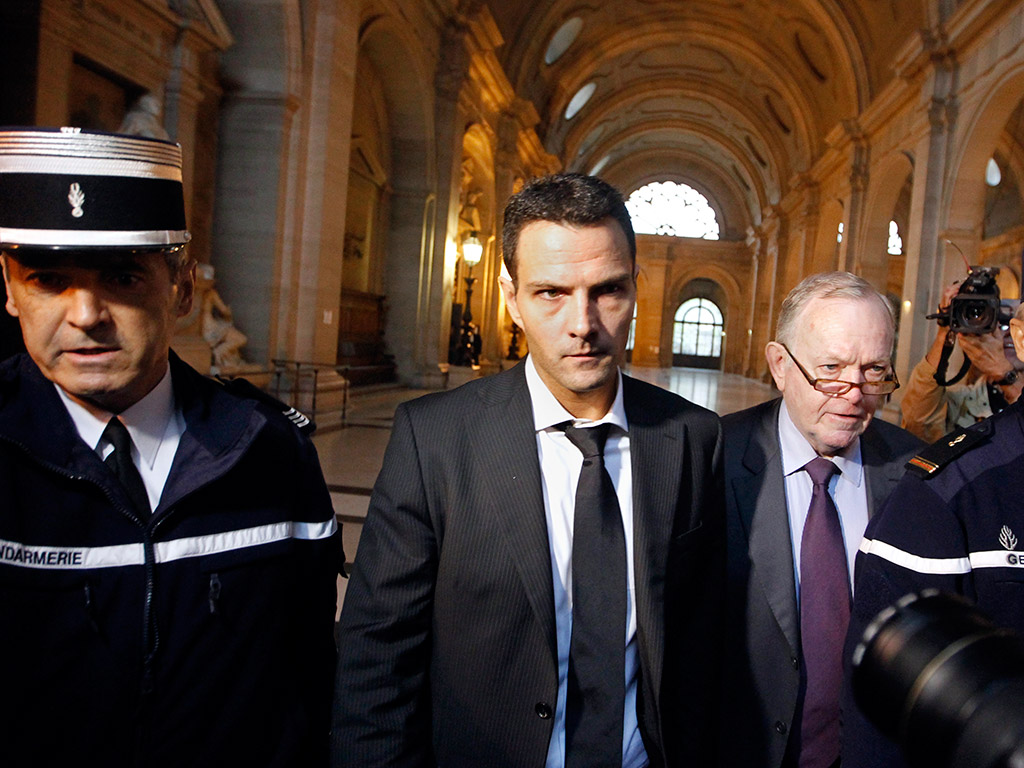

Some traders swear by fundamental analysis, some by technical strategies and others by different combinations of the two. But the one common feature in the operating principles – not techniques – of the world’s most successful traders is the very opposite of the chest-thumping, high-living, “greed is good” braggadocio of Gordon Gekko from 1987’s Wall Street.
Despite making billions of dollars in the markets over the years, some traders still retain a healthy respect for their dangerous unpredictability. They never believe they have all the answers – indeed one of the best, Paul Tudor Jones, preaches modesty in the face of even the biggest coups. They are as disciplined as soldiers. Although they have immense wealth, they keep their feet firmly on the ground and most of them routinely give away large chunks of their fortune to a variety of causes close to their hearts. And, in an apparent contradiction to their sometimes headline-making wins, most of them attribute their long-running success to a firm recognition that they will never beat the market all the time and that therefore their secret is to know how to reduce the loss-making plays.
Who are the good guys?
Paul Tudor Jones
An economist by training, Jones turned the October 1987 stock market crash into a triumph.
James Simons
Simons deciphered codes during the Vietnam War and founded Renaissance Technologies.
Ray Dalio
A master of preserving capital, Dalio founded his own hedge fund at the age of 25.
Seth Klarman
To learn Klarman’s secrets you just have to buy his book. A second-hand copy costs $1,600.
“When I get hurt in the market, I get the hell out,” Randy McKay, a former marine who became a successful trader, told writer Jack Schwager, also a successful trader and author of recently released The Little Book of Market Wizards, an analysis of the trading styles of the most successful operators. “It doesn’t matter at all where the market is trading. I just get out.”
All of the operators mentioned in this article have proved their merit over many years and greatly increased the wealth of their clients. And they all understand that a handful of good years does not make a top trader.
Swerving the crash
Regarded as one of the greatest-ever futures traders, Paul Tudor Jones is the man who turned the October 1987 stock market crash into a triumph, while many others were wiped out. In that catastrophic month, the now 59-year-old former cotton trader posted a stunning 62 percent return through all the mayhem – and that after five consecutive years of triple-digit gains for his fund. In his record-breaking run, Jones’ worst year produced a mere 99 percent return. When the dust finally cleared after the crash, Jones had piled up a 200 percent return and made $100m in the money of the time.
Since he established his hedge fund, Tudor Investments, in 1983, with money under management of just $300,000, it has achieved an annual average return of 24 percent. Its total value has swollen to $12bn. Unsurprisingly, over the years Jones has earned a reputation for picking the top and bottom of markets in big-swing plays while often leaving the smaller pickings on the table.
An economist by training, Jones has a highly activist style. According to Schwager, his office resembles a trading floor. It’s wallpapered with monitors, Jones constantly yells orders to traders, and staff members pour in and out to feed market information to the boss.
But like all the successful dealers, Jones knows when to back off. As he told Schwager: “When I’m performing poorly, I keep reducing my position size. That way, I will be trading my smallest position size when my trading is at its worst.” When asked what advice he would give to the average trader, Jones says: “Don’t focus on making money; focus on protecting what you have.” And unfortunately that’s advice only a minority are prepared to take.
The Quant King
One of the most original and certainly one of the most intellectually gifted traders is James Simons. A mathematician with a PhD from Berkeley, Simons deciphered codes during the Vietnam War before going on to found Renaissance Technologies, the quantitative hedge fund that is regarded as the very epitome of technical analysis. Renaissance was one of the first funds to employ complex computer models to the task of analysing and trading securities of all kinds across multiple jurisdictions. Along the way the ‘Quant King’, as Simons is often described, co-authored the Chern-Simons theory, an explanation of condensed-matter physics that helps explain string theory among other conundrums. Now 76 and retired from active fund management, Simons has parlayed his creative intelligence into a $10bn fortune, a large percentage of which he has given away.

Reflecting its founder’s own background and convictions, Renaissance, which handles some $15bn, is stacked with PhDs in mathematics and physics rather than MBAs. Yet in an apparent paradox, while Simons employs the best and brightest in an endless quest for the breakthroughs that help Renaissance crack the DNA of the markets, he also sets considerable store on the past. “Everything’s tested in historical markets. The past is a pretty good indicator of the future. It’s not perfect,” he says. “But human beings drive markets and human beings don’t change stripes overnight. So to the extent that one can understand the past, there’s a good likelihood you’ll have some insight into the future.”
This amalgam of interpreting the future through the clues provided by the past has made Medallion, Renaissance’s flagship fund, a gold-plated investor. Medallion charges ‘five and 44’ for its services – that is, five percent management fees and 44 percent of all gains.
Virtual trader
Ray Dalio founded his own hedge fund – Bridgewater Associates – at the age of 25 and within nearly 40 years turned the firm into the world’s biggest, with approximately $130bn in funds under management. He did this, mainly by mastering the dark arts of preserving capital. As a result he has a net worth of $14.4bn, according to Forbes. Unlike most of his brethren in the hedge fund industry, Dalio eschews high degrees of leverage. Indeed at a normal debt to equity ratio of 4:1, Bridgwater has much lower borrowings than many retail banks.
Bridgewater specialises in the notoriously volatile currency and fixed-income markets that have been unhinged by the quantitative easing unleashed by central banks in the recovery from the recession. With the help of powerful computers that crunch the numbers of securities in dozens of countries, Bridgewater focuses on discrepancies between prices of assets in a highly contemporary form of arbitrage. Before adopting a particular strategy, Bridgwater runs it through multiple scenarios – virtual experiences – that aim to foolproof it so thoroughly that there is merely a tiny possibility of making a severe loss if the strategy, were to go wrong.
An economist by training, Dalio likes to see trading as an essentially simple activity. “An economy is simply the sum of the transactions that make it up,” he explained recently. “A transaction is a simple thing [but] because there are a lot of them, the economy looks more complex than it really is. If instead of looking at it from the top down, we look at it from the transaction up, it’s much easier to understand.”
But it’s not that easy to understand. Like other star traders, Dalio can indeed get it wrong. Gallingly, in the last two years his flagship Alpha fund has underperformed when compared to the industry average.
How to lose small
When Marty Schwartz is asked about his greatest trades, he always explains they are the losing ones – that is, the times he quit a position at a loss to avert making an even bigger one. And he counts Black Monday, the worst day of the 1987 stock market crash, as one of his most astute moves although lesser traders would see it otherwise. Banking on a recovery, Schwartz had gone long on the Friday when the markets first dived. But when they continued to plummet at the start of the following week, he got out as quickly as he could, albeit at a heavy loss. Had he not recognised, painful as it was, that he had made a mistake and clung to the hope that equities would recover, Schwartz would have suffered a possibly ruinous loss. Successful, long-term trading is based on a healthy sense of self-preservation, he says.
Schwartz, nicknamed ‘Pit Bull’, is an out-and-out technical trader, an operator who moves often and quickly on the basis of a constantly updated set of charts, rather like a ship’s captain sailing past many a dangerous coast. He is renowned for borrowing $30,000 and converting it into $100m in double-quick time. But far from achieving an unending string of successes, he spent years developing a quick-shooting trading style that is poles apart from the fundamental analysis of other legends of the market such as Seth Klarman (more about him shortly).
As Schwartz told author Jack Schwager, it’s vital for traders to develop a philosophy that reflects their nature: “By living the philosophy that my winners are always in front of me, it was not so painful to take a loss. If I make a mistake, so what?”
Saying that, the Pit Bull goes to great pains to make the smallest mistakes possible. Like Paul Tudor Jones, he backs right off when the markets turn against him or when he’s lost his confidence. “After a devastating loss I always play very small and try to get black ink, black, ink…and it works,” he insists.
Secrets to success
There are two ways of learning the secrets of Seth Klarman, founder of the Baupost hedge fund. First, you can buy a copy of his book, revealingly titled Margin of Safety: Risk Averse Value Investing Strategies For The Thoughtful Investor. Originally released in 1991 and out of print, it’s a measure of the store that would-be thoughtful investors put on his wisdom that new copies (in early April there were only three) will cost $3,575 and second-hand ones $1,600. The book is also one of the most stolen titles in American libraries.
Alternatively, you could invest with the fund and receive Klarman’s newsletter (or rather, you could once have done so – Baupost has been closed to investors for years). US-born to a Jewish family, Klarman has built up a $25bn portfolio of assets mainly by staying out of trouble. He’s a value investor as much as he is a trader – a prospector for longer-term, buy-and-hold opportunities based on a wide variety of considerations, rather like Warren Buffet, best-known value investor of them all.
If the best investors should earn their stripes in the midst of tribulation, Klarman fits the bill. While hundreds of hedge funds went belly-up and others saw huge redemptions in the financial crisis, Baupost’s assets tripled overall between 2007 and 2012. Today it’s rated the seventh-biggest hedge fund in the world. Even more impressively, it’s ranked in the top five in terms of lifetime returns. As The Economist pointed out, that is “a particularly striking record given [the fund’s] risk aversion”.
How does the ‘sage of Boston’, as he is sometimes known, do it? Klarman is famously patient and may not trade an asset for years – which is, again, reminiscent of Buffett who sometimes likens himself to a baseball batter who doesn’t have to swing. But even more interesting, in an age that rides on debt, the Baupost group has absolutely none.
Now 56, Klarman established his Boston-based fund in 1982 on conservative – but intricate – investment philosophies and has not wavered from them since. At any one time he may keep up to half of his total portfolio in cash, ready to pounce. Because he has highly developed risk-averse techniques, Klarman has the confidence to buy sometimes unpopular, undervalued assets while protecting value with the use of complex derivatives and put options.
A great benefactor to Israeli causes, Klarman runs Baupost under a relatively inexpensive fee structure based on ‘one and 20’ – that is one percent of assets payable as fees and 20 percent of profits (the industry standard is ‘two and 20’).
Proudly cautious, Klarman is worried right now. In his latest client newsletter he warns of an impending era of a bubble in asset prices driven by the post-crisis era of loose money, describing the price of Netflix, Tesla and other tech stocks as having “nosebleed valuations”. If indeed these valuations do prove too hard to defend, then chances are, that Klarman and the rest of the traders outlined above will steer well clear. And you can bet your house on that.


